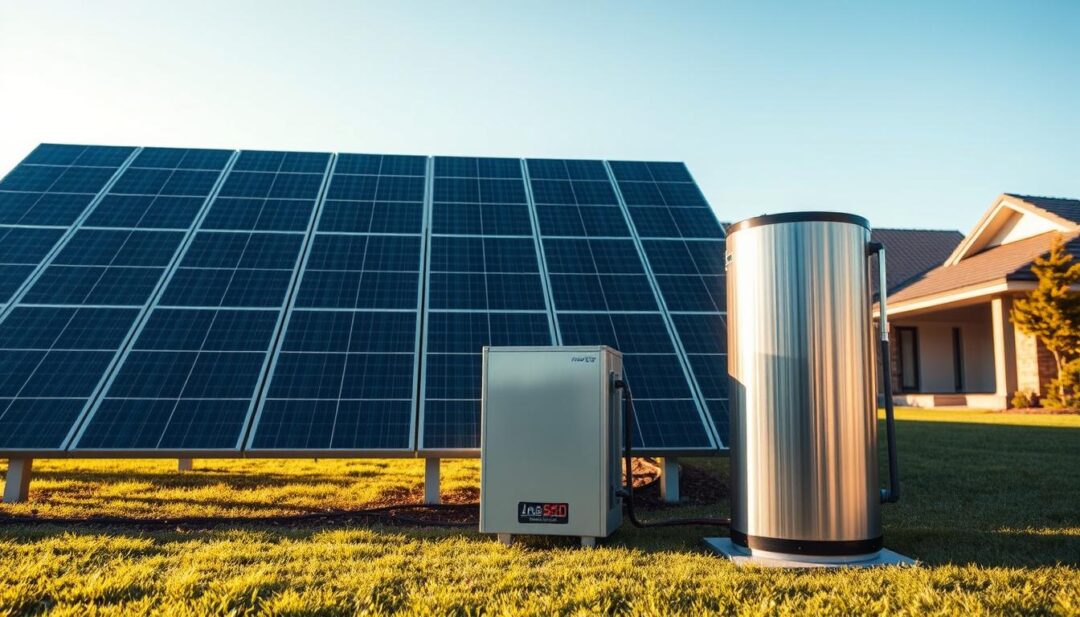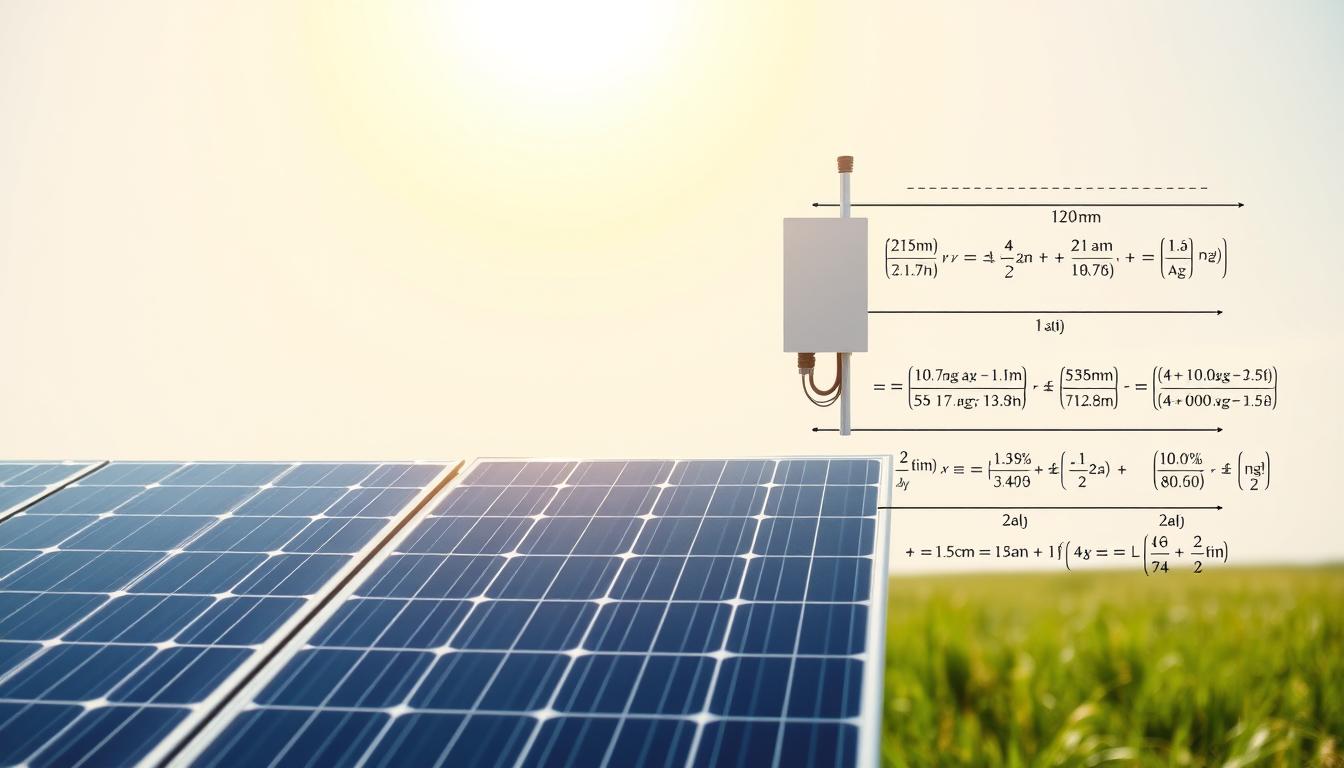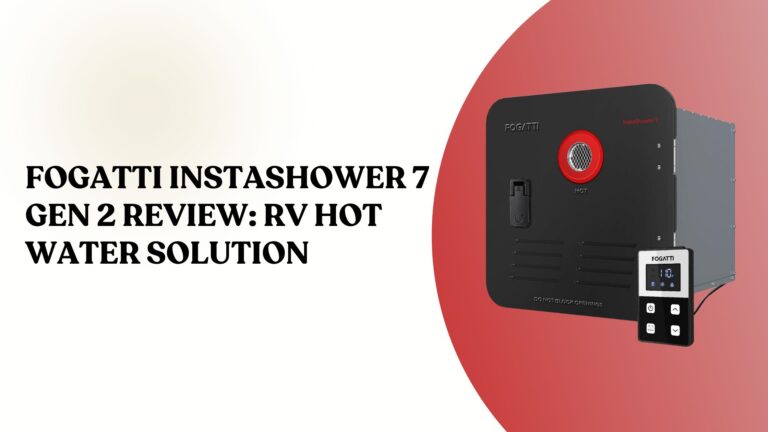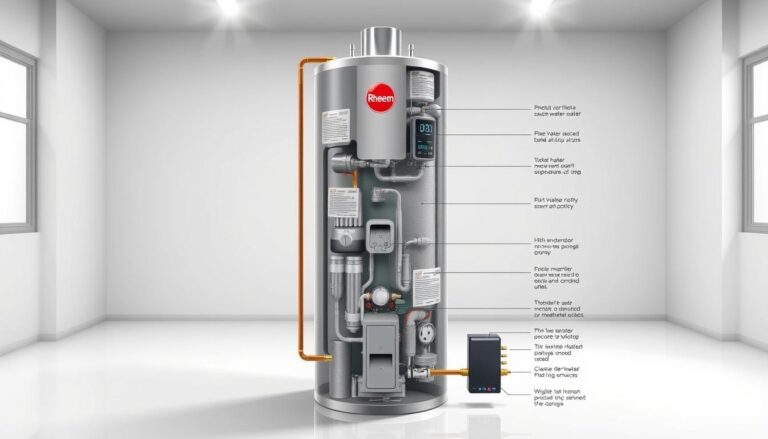How Many Solar Panels to Run a Heat Pump Water Heater?
As the world shifts towards renewable energy, homeowners are increasingly looking for ways to power their homes sustainably. One question that often arises is how to effectively use solar energy to run a heat pump water heater. The number of solar panels required depends on several factors, including the size of the heat pump, its energy efficiency, and local solar irradiance.
Understanding these factors is crucial for determining the right number of solar panels needed. This not only ensures that your heat pump water heater operates efficiently but also maximizes your investment in solar energy.
Key Takeaways
- The size and efficiency of the heat pump water heater affect the number of solar panels required.
- Local solar irradiance plays a significant role in determining solar panel output.
- Proper calculation of solar panel needs ensures efficient operation of the heat pump water heater.
- Investing in solar energy can significantly reduce your utility bills.
- Understanding your energy requirements is key to a successful solar panel installation.
Understanding Heat Pump Water Heaters
Heat pump water heaters offer a highly efficient alternative to traditional water heating systems. They work by transferring heat from one location to another, rather than generating heat directly. This process makes them significantly more energy-efficient than conventional water heaters.
How Heat Pump Water Heaters Work
Heat pump water heaters operate by extracting heat from the surrounding air and transferring it to the water in the tank. This process involves a refrigeration cycle that moves heat from one location to another. The efficiency of this process makes heat pump water heaters an attractive option for homeowners looking to reduce their energy consumption.
Energy Efficiency Ratings and ENERGY STAR Certification
When selecting a heat pump water heater, it’s crucial to consider its energy efficiency ratings. The Uniform Energy Factor (UEF) is a key metric that measures the heater’s overall efficiency. Many heat pump water heaters are ENERGY STAR certified, indicating they meet specific energy efficiency standards set by the U.S. Environmental Protection Agency. ENERGY STAR certified models are designed to provide significant energy savings while maintaining performance.
Typical Power Consumption Patterns
The power consumption of heat pump water heaters varies based on factors such as the model, usage patterns, and ambient temperature. On average, a heat pump water heater consumes between 1.5 to 2.5 kilowatt-hours (kWh) of electricity per day. Understanding these consumption patterns is essential for determining the solar panel requirements to run such a system efficiently.
Popular HPWH Models in the US Market
| Model | Capacity (gallons) | UEF | ENERGY STAR Certified |
|---|---|---|---|
| Rheem Professional Prestige | 50 | 3.02 | Yes |
| A.O. Smith Voltex | 80 | 3.25 | Yes |
| GE GeoSpring | 50 | 3.02 | Yes |
By understanding how heat pump water heaters work and their energy efficiency, homeowners can make informed decisions about their water heating needs and how to meet those needs using solar energy.
Solar Panel Basics for Home Energy Systems
To accurately size a solar panel system for a heat pump water heater, one must first grasp the basics of solar panels. Solar panels convert sunlight into electrical energy, and their performance is influenced by several factors.
Types of Solar Panels and Their Efficiency
Solar panels come in various types, including monocrystalline, polycrystalline, and thin-film, each with its own efficiency and cost characteristics. Monocrystalline solar panels are known for their high efficiency, typically ranging from 15% to 20%. Polycrystalline solar panels offer a slightly lower efficiency but are more cost-effective. Thin-film solar panels are less efficient but can be more suitable for certain applications due to their flexibility and lower production costs.
Solar Panel Output Ratings Explained
Solar panel output is measured in watts (W), and it indicates how much power the panel can produce under standard test conditions. The output rating depends on the panel’s efficiency and size. Understanding the output rating is crucial for calculating solar panel output for heat pump water heater needs.
Factors Affecting Solar Panel Performance
Several factors affect solar panel performance, including temperature, shading, and orientation. High temperatures can reduce efficiency, while shading can significantly impact energy production. Proper orientation and tilt can maximize exposure to sunlight.
Standard Solar Panel Sizes and Capacities
Standard solar panel sizes vary, but most residential panels have a wattage between 250W and 400W. The capacity of a solar panel system is determined by the number and wattage of the panels. A typical residential solar panel system can range from 3kW to 10kW.
| Solar Panel Type | Efficiency Range | Typical Wattage |
|---|---|---|
| Monocrystalline | 15%-20% | 250W-400W |
| Polycrystalline | 13%-16% | 250W-350W |
| Thin-Film | 7%-12% | 100W-250W |
Understanding these basics is essential for determining the solar panel capacity for heat pump water heater applications. By considering the type, efficiency, output rating, and size of solar panels, homeowners can accurately assess their energy needs and design an effective solar panel system.
How Many Solar Panels to Run a Heat Pump Water Heater
The number of solar panels needed to run a heat pump water heater depends on several variables, including the heater’s energy consumption and the solar panels’ output. To accurately determine the required number of solar panels, we need to follow a systematic approach.
Step-by-Step Calculation Formula
To calculate the number of solar panels required, first, determine the daily energy consumption of your heat pump water heater in kilowatt-hours (kWh). Then, assess the daily energy production of a single solar panel in your location. The formula is: Number of Solar Panels = Daily Energy Consumption of HPWH / Daily Energy Production per Solar Panel.
For instance, if your heat pump water heater consumes 6 kWh daily and one solar panel produces 1.5 kWh daily in your area, you would need 4 solar panels (6 kWh / 1.5 kWh = 4).
Accounting for System Losses and Inefficiencies
It’s crucial to account for system losses and inefficiencies when sizing your solar array. Factors such as inverter efficiency, wiring losses, and panel degradation can reduce overall system performance. A common practice is to oversize the solar array by 10-20% to compensate for these losses.
Sizing for Different Heat Pump Water Heater Models
Different heat pump water heater models have varying energy consumption rates. For example, a 50-gallon model might consume less energy than an 80-gallon model. When sizing your solar array, ensure you’re using the correct energy consumption data for your specific HPWH model.
Using Online Solar Calculators
Online solar calculators can simplify the sizing process by taking into account various factors, including your location, roof orientation, and local solar irradiance. These tools can provide a more accurate estimate of the number of solar panels needed to run your heat pump water heater.
By following these steps and considering the specific requirements of your heat pump water heater and solar panel system, you can accurately determine the number of solar panels needed to meet your hot water needs sustainably.
Determining Your Heat Pump Water Heater’s Energy Needs
To size your solar panel system correctly, you first need to understand how much energy your heat pump water heater consumes. This understanding is crucial for an efficient and cost-effective solar installation.
Reading Energy Labels and Specifications
The first step in determining your heat pump water heater’s energy needs is to read its energy label and specifications. The ENERGY STAR label provides valuable information about the product’s energy efficiency. Look for the Uniform Energy Factor (UEF), which indicates the heater’s overall efficiency.
Measuring Actual Consumption with Energy Monitors
While energy labels provide a good estimate, measuring the actual consumption with energy monitors gives a more accurate picture. Devices like smart plugs or energy monitors can track the real-time energy usage of your heat pump water heater.

Seasonal Variations in Energy Usage
It’s essential to consider seasonal variations in energy usage. Heat pump water heaters work more efficiently in warmer temperatures, so their energy consumption may vary throughout the year. Understanding these patterns helps in sizing your solar panel system to meet peak demands.
Household Size Impact on Hot Water Needs
The size of your household significantly impacts your hot water needs. Larger households require more hot water, which can increase the energy consumption of your heat pump water heater. The following table illustrates how household size can affect energy needs:
| Household Size | Daily Hot Water Demand | Estimated Daily Energy Consumption |
|---|---|---|
| 1-2 people | 40-60 gallons | 2-3 kWh |
| 3-4 people | 60-80 gallons | 3-4 kWh |
| 5+ people | 80-100 gallons | 4-5 kWh |
By understanding these factors, you can accurately determine your heat pump water heater’s energy needs and design a solar panel system that meets your requirements.
Factors That Affect Solar Panel Requirements
Assessing the right number of solar panels for a heat pump water heater involves understanding several critical factors. These factors can significantly impact the overall efficiency and effectiveness of your solar panel system.
Geographic Location and Solar Irradiance
The amount of sunlight your location receives plays a crucial role in determining the number of solar panels needed. Geographic location affects solar irradiance, which is the power per unit area received from the sun. Areas with higher solar irradiance require fewer solar panels to achieve the same energy output compared to areas with lower irradiance.
For instance, homes in sunny states like Arizona or California will require fewer solar panels compared to homes in cloudier states like Washington or Oregon. Understanding your local solar irradiance is essential for accurately calculating your solar panel needs.
Roof Orientation, Angle, and Available Space
The orientation and angle of your roof significantly impact the efficiency of your solar panel system. Ideally, solar panels should face south (in the northern hemisphere) and be tilted at an angle that optimizes energy production based on your latitude.
The available space on your roof also limits the number of solar panels you can install. It’s essential to assess your roof’s size and layout to determine the maximum number of panels it can accommodate.
| Roof Orientation | Ideal Angle | Energy Production Impact |
|---|---|---|
| South-facing | 30-40 degrees | Maximum energy production |
| East/West-facing | 20-30 degrees | Moderate energy production |
| North-facing | Not recommended | Minimal energy production |
Shading Considerations and Solutions
Shading from trees, buildings, or other obstructions can dramatically reduce the efficiency of your solar panels. Even partial shading can lead to significant losses in energy production.
To mitigate shading issues, consider using micro-inverters or power optimizers, which can help minimize the impact of shading on individual panels. Additionally, trimming trees or adjusting the layout of your solar panel array can help optimize energy production.
Weather Patterns and Seasonal Production Changes
Weather patterns and seasonal changes affect solar panel output. During winter months or periods of prolonged cloud cover, energy production may be lower.
To ensure a consistent energy supply, it’s crucial to oversize your solar panel system slightly to account for these variations. Understanding local weather patterns and seasonal changes can help you make more accurate calculations for your solar panel needs.
By considering these factors, you can more accurately determine the number of solar panels required to efficiently run your heat pump water heater.
Grid-Tied vs. Off-Grid Solar Systems for Water Heating
Grid-tied and off-grid solar systems are two distinct approaches to powering heat pump water heaters, each with its own set of advantages and challenges. The choice between these systems depends on several factors, including energy needs, local regulations, and personal preferences.
Grid-Tied System Components and Benefits
A grid-tied solar system connects to the electrical grid and supplies excess energy back to the utility company through net metering. The key components include solar panels, an inverter, and a grid tie inverter. The benefits of grid-tied systems include:
- Reduced energy bills through net metering
- Lower upfront costs compared to off-grid systems
- No need for battery storage
Off-Grid System Requirements and Challenges
Off-grid solar systems operate independently of the electrical grid, requiring battery storage to provide power when the sun is not shining. The main components include solar panels, a charge controller, batteries, and an inverter. While off-grid systems offer energy independence, they come with challenges such as:
- Higher upfront costs due to battery storage
- Complexity in system design and maintenance
- Potential for energy shortages during prolonged cloudy periods
Hybrid Systems and How They Work
Hybrid solar systems combine the benefits of grid-tied and off-grid systems, offering both grid connection and battery storage. These systems can provide backup power during grid outages and optimize energy savings through time-of-use management.
Net Metering and Utility Considerations
Net metering policies vary by utility company and region, affecting the financial benefits of grid-tied solar systems. Homeowners should research local net metering laws and utility company policies before installing a solar system.
In conclusion, the choice between grid-tied, off-grid, and hybrid solar systems for powering heat pump water heaters depends on a variety of factors, including energy needs, budget, and local regulations. By understanding the components, benefits, and challenges of each system, homeowners can make informed decisions to maximize their energy efficiency and savings.
Real-World Examples: Solar Sizing Case Studies
To illustrate the practical application of sizing solar panels for heat pump water heaters, let’s examine some real-world case studies. These examples will demonstrate how to apply the principles discussed in previous sections to various household setups.
Small Household Setup (50-gallon HPWH)
For a small household with a 50-gallon heat pump water heater, the energy requirements are relatively modest. Assuming a daily energy consumption of 1.5 kWh, a solar array of 3-4 panels (each 300W) would be sufficient to meet the energy needs on most days. For more detailed information on sizing the solar array, you can refer to resources like sizing the array.
Large Family Home Configuration (80-gallon HPWH)
A large family home with an 80-gallon heat pump water heater requires more energy. With a daily consumption of 3 kWh, a solar array consisting of 6-8 panels (300W each) would be needed to cover the energy demands. This configuration assumes an average solar irradiance and accounts for some system losses.
Off-Grid Vacation Home System
For an off-grid vacation home, a more comprehensive solar solution is necessary. A typical setup might include a 2 kW solar array (7-8 panels) paired with a battery bank to store excess energy for nighttime or cloudy days. This ensures a reliable hot water supply even in remote locations without grid connectivity.
Solar + HPWH Retrofit to Existing Home
Retrofitting an existing home with a solar-powered heat pump water heater involves assessing the current energy usage and available roof space. For instance, a home with limited roof space might require more efficient solar panels or a different configuration to meet the energy demands of the HPWH. Careful planning is essential to maximize the benefits of the retrofit.
These case studies demonstrate the importance of tailored solar sizing for heat pump water heaters in different household scenarios. By applying the principles outlined in this article, homeowners can effectively determine how many solar panels to run a heat pump water heater in their specific situation.
Installation Considerations and Battery Storage
To ensure optimal performance, it’s crucial to carefully consider various installation factors for solar panel systems powering heat pump water heaters. A comprehensive approach will help in determining the solar panel quantity for heat pump water heater and overall system efficiency.
Professional Installation vs. DIY Approach
While a DIY installation might seem cost-effective, professional installation is recommended for solar panel systems due to their complexity and the need for precise configuration to maximize energy production.
Permitting and Local Regulations
Before installation, it’s essential to comply with local regulations and obtain necessary permits. These vary by location and can impact the overall cost and feasibility of the project.

Battery Storage Options and Sizing
Battery storage is a critical component for off-grid systems or for providing backup during power outages. The size of the battery bank depends on the household’s energy needs and the desired level of autonomy.
| Battery Type | Capacity (kWh) | Depth of Discharge |
|---|---|---|
| Lead-Acid | 10 | 50% |
| Lithium-Ion | 15 | 80% |
System Monitoring and Maintenance
Regular monitoring and maintenance are vital to ensure the solar panel system operates at peak efficiency. This includes cleaning the panels, checking for software updates, and monitoring energy production.
By carefully considering these factors, homeowners can ensure their solar panel system effectively powers their heat pump water heater, maximizing energy savings and reducing reliance on the grid.
Conclusion
Determining how many solar panels to run a heat pump water heater requires careful consideration of various factors, including the heater’s energy efficiency, your household’s hot water needs, and the solar irradiance in your area.
By understanding these elements and using the step-by-step calculation formula, you can accurately size your solar panel system to meet your energy needs. For instance, a typical 50-gallon heat pump water heater may require a 2-3 kW solar panel system, depending on your location and usage patterns.
To ensure a seamless transition to solar-powered water heating, consider consulting with a professional to assess your specific situation and provide personalized guidance. This will help you navigate local regulations, permitting requirements, and the selection of suitable equipment, such as battery storage options for off-grid or hybrid systems.
By harnessing solar energy to power your heat pump water heater, you’ll not only reduce your reliance on the grid but also lower your energy bills and contribute to a more sustainable future. The solar energy needed for a heat pump water heater can be substantial, but with the right system design and installation, you can enjoy hot water while minimizing your environmental footprint.







